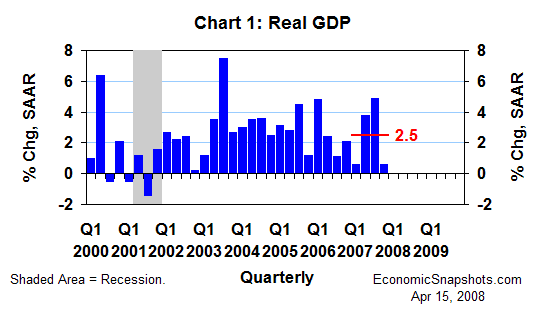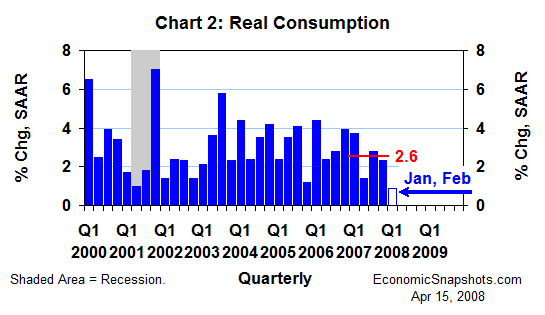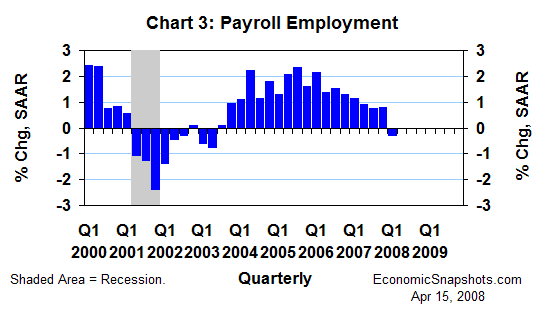
| Back to Index |
April 15, 2008 – In the BEA’s “final” tally, U.S. real GDP rose at an exceptionally weak 0.6% annual rate in Q4 last year (Chart 1). But, that followed an exceptionally strong 4.9% gain in Q3.

Smoothing away this quarterly volatility, real GDP growth averaged a moderate 2.5% annual rate for the four quarters through Q4. That’s only a few percentage points less than the Congressional Budget Office’s 2.8% estimate of the economy’s long-run potential rate of growth.
Unfortunately, last year’s fairly firm GDP trend is ancient history now. It looks like the economy may have fallen into a recession in Q1 – pushed over the edge by weakening real consumption growth. (Consumption accounts for roughly 70% of U.S. GDP.)
Last year, real consumption rose at a fairly healthy 2.3% annual rate in Q4, and growth averaged 2.6% for the four quarters through Q4 (Chart 2).

This year, real consumption was only unchanged in February after a tiny 0.1% January rise. Compared to Q4, consumption rose at a meager 0.9% annual rate in the first two months of Q1.
Last year, consumers were forced to cope with high energy prices, a credit crunch and declines in the value of their homes. Even so, they continued to expand their real spending at a fairly good pace.
This year, consumers continue to face all of last year’s problems, plus one more. Firms are retrenching and jobs have begun to disappear.
Payroll employment edged down at a 0.3% annual rate in Q1. That compares to gains of 0.8% in both Q3 and Q4 last year (Chart 3).

Job growth is the most important determinant of real consumption growth. With this recent erosion in payroll jobs, prospects for a quick consumer rebound look slim.
At the same time, this weakening in real consumption growth will be working to depress real economic activity. That puts pressure on firms to make more job cuts.
Thus, a negative feedback loop between consumption and job growth seems to have emerged in Q1. Once it begins, this process is not easy to stop.
As noted in its March minutes, the FOMC hopes that the lagged benefits of its recent easing actions will join with the forthcoming fiscal stimulus to restart economic growth in the second half of this year.
Suzanne Rizzo